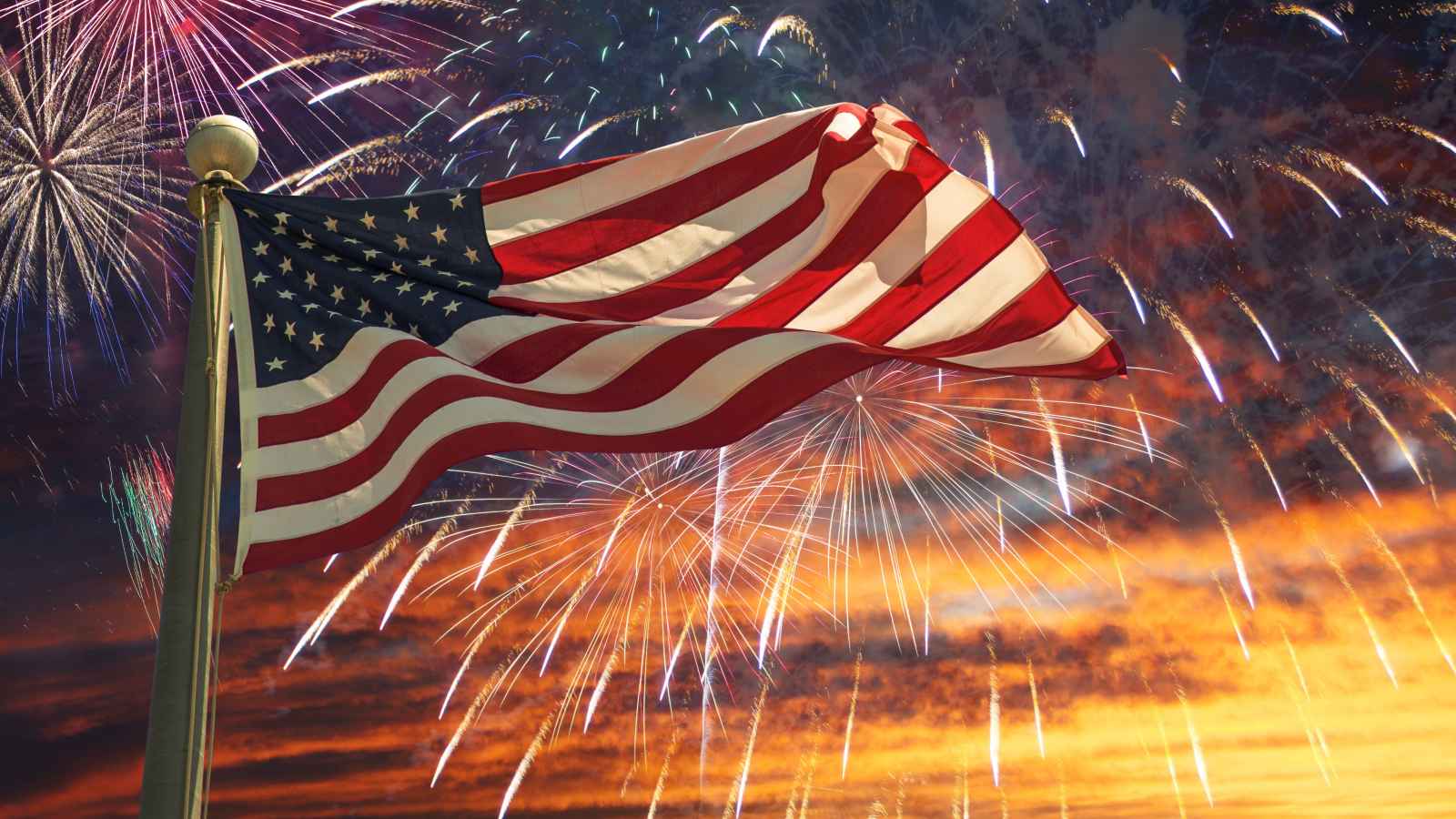On July 4, Americans gather to commemorate the nation’s birthday and independence. The majority of Americans grill in their backyards, at beaches, or in parks on this day. Some individuals participate in parades or marches and appreciate the fireworks that are frequently launched at twilight. We begin the celebrations by providing information, trivia, and anything else you need to know about Independence Day. Happy Fourth of July!
The background of Independence Day
Even though most of us had already received this history lesson in school, as playtime or the end of the day approached, we probably weren’t really paying attention. However, we cannot truly value our liberties if we are unaware of how they were obtained and, more importantly, how close we came to losing them. There are more historical twists and turns in the story of America’s independence than we can conceivably cover here. However, we can at least get you begun with the fundamentals.
In the 1700s, America was not a nation of ‘united states.’ Instead, thirteen colonies with distinct personalities existed. From 1763 to 1773, King George III of Britain and the British Parliament imposed a series of draconian tariffs and laws on the colonies, increasing the pressure on them. Without regard for the hardships of the colonists, the British crown imposed exorbitant taxes on British luxury products such as tea and sugar in order to profit. By 1764, the phrase “Taxation without representation is tyranny” had become the rallying cry of outrage throughout the colonies.
The more the colonists rebelled, the more aggressively King George responded. Imagine if not only could enemy soldiers enter your residence, but they could also demand that you feed and house them. The Quartering Act of 1765 authorised this for British soldiers.
But the Stamp Act of 1765 was the final straw for the colonists. This March legislation imposed a tax on all printed paper, including newspapers, legal documents, ship’s papers, and even playing cards! In the autumn of 1768, as colonial complaints grew louder and bolder, British ships arrived in Boston Harbour as a show of force. Remember that the British Navy dominated the seas around the world as a result of the British Empire’s global reach.
On March 5, 1770, tensions erupted in Boston Harbour during a street battle between colonists and British soldiers. Crispus Attucks, 47, was the first American and African-American to be slain in the Boston Massacre, along with three other colonists. He was also the first victim of the Boston Massacre.
In 1773, colonists disguised as Mohican Indians raided a British ship and dumped all the tea overboard to avoid paying the taxes, sparking the Boston Tea Party, from which today’s Tea Party Republicans get their name. On April 19, 1775, a militia of patriots fought against British soldiers in the communities of Lexington and Concord, marking the beginning of the American Revolution. The time had come for American independence.
In April 1775, when the first battles of the Revolutionary War broke out, only a small number of colonists desired complete independence from Great Britain, and they were considered extremists.
However, by the middle of the following year, many more colonists were leaning towards independence, as a result of growing hostility towards Britain and the dissemination of revolutionary views, such as those expressed in “Common Sense,” Thomas Paine’s best-selling pamphlet published in early 1776.
On June 7, 1776, the Continental Congress convened at the Pennsylvania State House (later Independence Hall) in Philadelphia, and Virginia delegate Richard Henry Lee introduced a motion calling for the colonies’ independence. Congress rescheduled the vote on Lee’s resolution but appointed a five-man committee, composed of Thomas Jefferson of Virginia, John Adams of Massachusetts, Roger Sherman of Connecticut, Benjamin Franklin of Pennsylvania, and Robert R. Livingston of New York, to write an official statement justifying the separation from Great Britain.
On July 2, 1776, the Continental Congress voted almost unanimously in favour of Lee’s resolution for independence, and on July 4, it formally adopted the Declaration of Independence, which had been written in large part by Thomas Jefferson. In the end, the process of composing the Declaration of Independence was contentious. Thomas Jefferson, who was entrusted with putting together the document, envisioned a nation in which “Life, Liberty, and the pursuit of happiness” defined what it meant to be an American. The document proclaimed the 13 American colonies’ liberation from Britain and reaffirmed their rights as free citizens, declaring that they were no longer subject (and subordinate) to the British monarch, King George III, and that they were now a unified, free, and independent state.
John Adams wrote to his wife Abigail that July 2 “will be celebrated by succeeding Generations as the Great Anniversary Festival” and that the festivities should include “Pomp and Parade…Games, Sports, Guns, Bells, Bonfires, and Illuminations from End to End of this Continent.”
Thomas Jefferson and John Adams, the only two signatories of the Declaration of Independence who later served as presidents of the United States, perished on July 4, 1826, the 50th anniversary of the Declaration. James Monroe, another Founding Father who was elected president but was not a signatory of the Declaration of Independence, died on July 4, 1831, making him the third President to pass away on the anniversary of independence. Calvin Coolidge, who was born on July 4, 1872, is the only U.S. president to have been born on Independence Day.
Alice in Wonderland Day 2023: Date, History, Facts, Activities
Caribbean Community Day 2023: Date, History, Facts about Caribbean
INDEPENDENCE DAY ACTIVITIES
The Declaration of Independence should be read.
The majority of Americans have never read the Declaration of Independence in its entirety. But without this brief but historically significant document, they likely would not have been able to spend the day barbecuing or lighting pyrotechnics, and they certainly would not have had the day off.
Observe pyrotechnics
It’s fantastic in multiple ways. Observing pyrotechnics on the Fourth of July is a centuries-old custom. John Adams mentioned this form of celebration in a letter to his wife Abigail dated July 3, 1776.
Explore a national monument or historical site
There are numerous fascinating historical landmarks and locations in America. Regardless of where in the country you reside, there is almost undoubtedly a historical site nearby. A reservation of Native Americans, a battlefield from the American Civil War, a government facility, or a war memorial could be considered.
5 FASCINATING FACTS ABOUT THE DECLARATION OF INDEPENDENCE
Since the actual vote for independence occurred on July 2, 1776, John Adams declined to acknowledge July 4 celebrations.
The Declaration of Independence was finalised on July 4, 1776, but the majority of signers did not sign until August 2, 1776.
There were a total of 86 changes made to Thomas Jefferson’s original draught.
The formal Declaration of Independence was written so colonies desiring foreign allies could legally declare independence from the British.
“Original Declaration of Independence dates July 4, 1776” is actually inscribed on the back of the Declaration of Independence, contrary to what is depicted in the film “National Treasure.”
INDEPENDENCE DAY DATES
| Year | Date | Day |
|---|---|---|
| 2020 | July 4 | Saturday |
| 2021 | July 4 | Sunday |
| 2022 | July 4 | Monday |
| 2023 | July 4 | Tuesday |
| 2024 | July 4 | Thursday |




